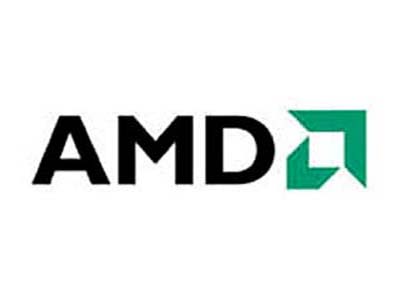AMD Updates 2014-2015 Product Roadmap [UPDATED]
New information has come to light regarding the product plans for AMD's future.
UPDATE: In response to the article below, a source familiar with AMD's roadmap claims that the information in the report from DigiTimes is not entirely accurate. Purportedly a number of desktop-oriented Kabini APUs for desktops are already shipping, or have already been on shelves for a short while. On top of this, the SKUs mentioned below are also arriving sooner than originally planned, rather than later. Another piece of information that came to see daylight is that AMD may be ditching the “A-series” nomenclature, as well as the four-number identifiers for APUs. This means that the models listed below are likely to retail with a different name. No information was revealed regarding the new naming system.
A report from DigiTimes revealed some interesting information about AMD's future. For starters, it indicates that the Hawaii-based GPUs will hit the market around the end of September.
In the APU world, the report also indicated that the Kabini-based APUs would be hitting shelves starting Q1 2014, initially with only entry-level models. (Performance models are likely to follow.) The APUs will use the ST3 socket for mobile devices and socket FS1B for desktops. The units will have power consumptions of 25 W; the three entry-level models include the A4-5350, A4-5150, and E1-2650. The first two are quad-core chips with the third being a dual-core part. There was no indication of these parts being desktop. Mass production is said to begin in February 2014 with an official announcement following in March.
Beema, the successor to Kabini, is expected to launch either during 2H14 or 1H15. AMD's FM1 and AM3 sockets should be phased out by the end of 2013. The AM3 socket will have lived for almost five years. At this time, AMD is also said to expect 30 percent of CPU shipments to use the AM3+ socket, with the remaining 70 percent using the FM2 socket. In 2015, AMD is supposedly planning to release the Carrizo APUs for desktops, which will feature the Excavator architecture.
Follow us @tomshardware, on Facebook and on Google+.
Get Tom's Hardware's best news and in-depth reviews, straight to your inbox.
Niels Broekhuijsen is a Contributing Writer for Tom's Hardware US. He reviews cases, water cooling and pc builds.
-
beta212 I guessing the delays are probably due to TSMC having to fab the millions of chips for the PS4 and the xbone, wasn't there some news that the xbone chip yields were low?Reply -
tomfreak We still need a proper i3/i5 killer that have high performance/price, it is not like I want amd win Intel i7, but at least i3/i5 segment should have something price aggressively that the user will not even bother buying i3/i5 at all. *I miss the Athlon64-Phenom II days, their performance/price is still better than todays AMD.Reply
and Sigh, no more delay please, Seriously release steamroller core CPU already, stop delaying. Intel isnt gonna stop moving. -
samal90 Waiting on excavator cores to change my pc from bulldozer. Also Carrizo will make a perfect HTPC for movies (streaming and playback) and game emulation and other indie titles. Can't wait.Reply -
tomfreak Reply
thats what really worries me, more delays on the FX series. AMD should have release steamroller FX at earliers Q1 2014 together with Kaveri, but there are no news for FX streamrollers so far.11449963 said:No news on either SR FX processors or a successor?
pitting piledriver FX against Haswell is losing game when piledriver 8 core is already barely keep up Sandy bridge 1155. Sigh...losing i7 market segment is not enough, its like they are going to lose i5/i3 market as well. -.-||

